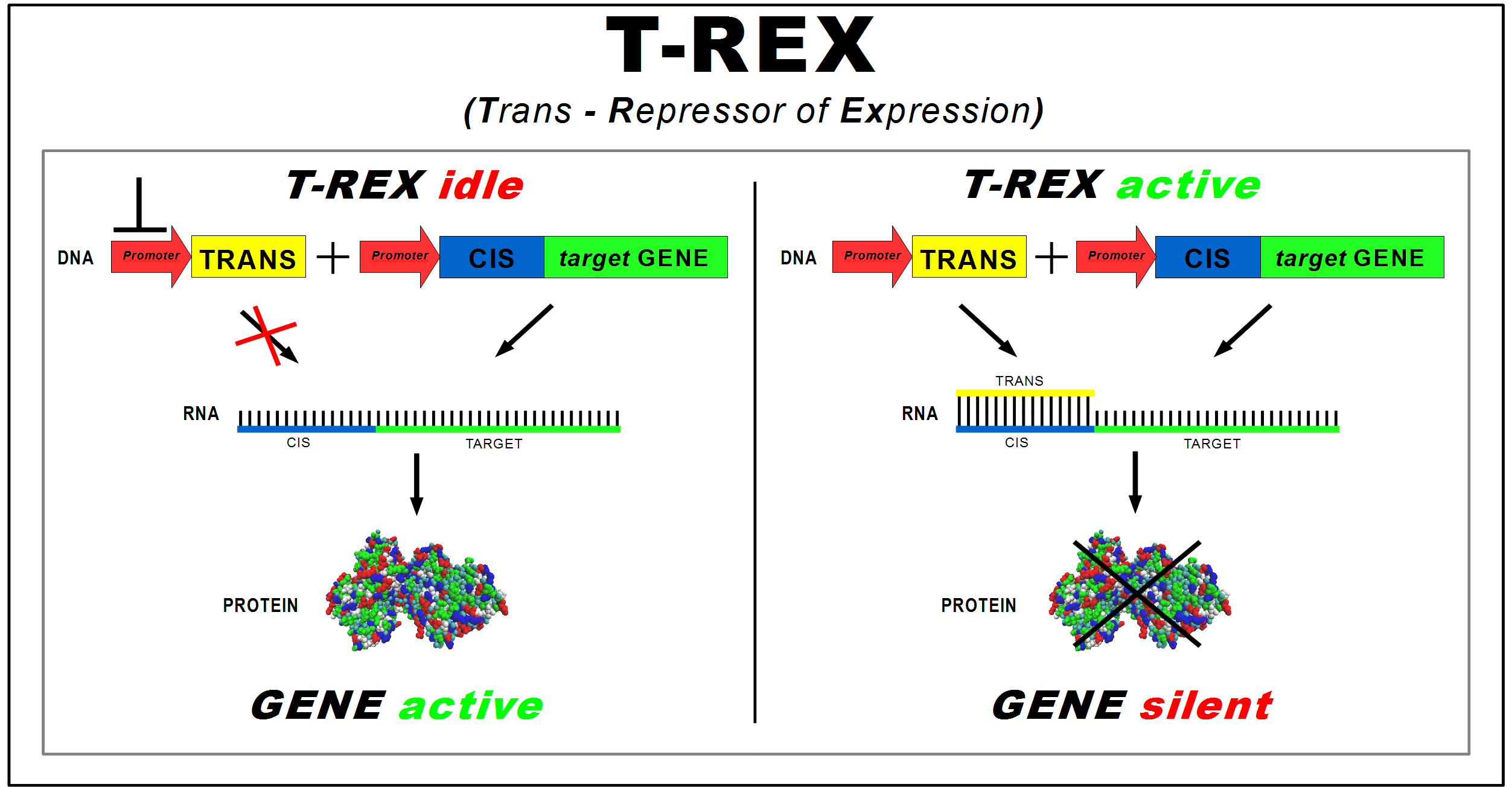Team:Bologna
From 2009.igem.org
Marco.cavina (Talk | contribs) |
|||
| Line 1: | Line 1: | ||
{{Template:BolognaTemplate}} | {{Template:BolognaTemplate}} | ||
| - | + | <br><br><br> | |
| - | + | ||
| - | + | ||
[[Image:Ely9Copia.jpg|center|850px]] | [[Image:Ely9Copia.jpg|center|850px]] | ||
| + | <br> | ||
| + | <div style="text-align:justify"> | ||
| + | = Project Summary = | ||
| - | + | <br> | |
| - | < | + | <font face="Calibri" size="5"> |
| - | + | ||
| - | + | ||
'''Which is our idea?''' | '''Which is our idea?''' | ||
| + | </font> | ||
| + | <br><br> | ||
| - | The project aims to implement a protein synthesis regulation system in | + | <html> |
| - | + | <font face="Calibri" font size="4" color="#000000"> | |
| - | + | The project aims to implement a <b>protein synthesis regulation system</b> in <i>Escherichia coli</i> that acts at translational level, regardless of the target gene. This <b>"general-purpose"</b> device allows a faster control of protein expression.<br>The device was named <b>T-Rex</b> (<b>T</b>rans <b>R</b>epressor of <b>Ex</b>pression). | |
| + | </font></html> | ||
| + | <br> | ||
| + | <font face="Calibri" size="5"> | ||
'''How can we achieve our goal?''' | '''How can we achieve our goal?''' | ||
| + | </font> | ||
| + | <br><br> | ||
| - | + | <html> | |
| + | <font face="Calibri" font size="4" color="#000000"> | ||
| + | T-Rex device consists of two new BioBricks: | ||
| + | <br><br> | ||
| + | <ul> | ||
| + | <li><font color="#000080"><b>CIS-repressing</b></font>, to be assembled upstream of the target protein coding sequence; it contains a ribosomal binding site; <font color="#228b22"><b>(RBS)</b></font> | ||
| + | </ul> | ||
<br> | <br> | ||
| - | + | <ul> | |
| + | <li><font color="#000080"><b>TRANS-repressor</b></font>, to be placed under the control of a different promoter; it is complementary to the CIS-repressing, and contains a <font color="#228b22"><b>RBS cover</b></font> in two versions of different length (4 and 7 nucleotides). | ||
| + | </ul> | ||
| + | <br> | ||
| + | CIS-repressing and TRANS-repressor were designed using our [[Team:Bologna/Software#1|BASER]] tool. | ||
| + | <br><br> | ||
| + | Transcription of the target gene produces a mRNA strand, starting with the Cis element, which is translated into proteins by ribosome. Trans’ promoter induction produces a transcript that binds with the Cis part. The <b>RNA duplex</b> prevents ribosome from binding to RBS, <b>repressing protein synthesis</b>. Thus, the TRANS-repressor amount regulates the gene mRNA translation rate. | ||
| + | </html> | ||
| + | <br><br> | ||
| + | [[Image:project3b.png|center|950px|]] | ||
| + | <br><br> | ||
| - | + | <font face="Calibri" size="5"> | |
| - | + | '''How can we test the device?''' | |
| - | + | </font> | |
| - | + | ||
| - | + | ||
| - | + | ||
<br><br><br> | <br><br><br> | ||
| - | [[Image:circuit2.jpg|center|900px | + | <html> |
| - | < | + | <font face="Calibri" font size="4" color="#000000"> |
| - | + | In order to test and characterize our T-REX device, we developed the following genetic circuit:</font> | |
| + | </html> | ||
| + | <br><br> | ||
| + | [[Image:circuit2.jpg|center|900px]] | ||
| + | <font face="Calibri" font size="4" color="#000000"> | ||
| + | <br><br> | ||
The T-REX device is proposed as a universal and fast switch in synthetic gene circuits. | The T-REX device is proposed as a universal and fast switch in synthetic gene circuits. | ||
<br><br><br> | <br><br><br> | ||
| Line 37: | Line 61: | ||
More details about our work in the [[Team:Bologna/Project|Project]] section. | More details about our work in the [[Team:Bologna/Project|Project]] section. | ||
</font> | </font> | ||
| - | + | <br> | |
| + | <br> | ||
| + | <br> | ||
= Acknowledgements = | = Acknowledgements = | ||
| + | <br> | ||
<font size="3"> | <font size="3"> | ||
* ''' [http://www.unibo.it/Portale/default.htm University of Bologna] ''' | * ''' [http://www.unibo.it/Portale/default.htm University of Bologna] ''' | ||
Revision as of 14:37, 21 October 2009
| HOME | TEAM | PROJECT | SOFTWARE | MODELING | WET LAB | PARTS | HUMAN PRACTICE | JUDGING CRITERIA |
|---|
Project Summary
Which is our idea?
The project aims to implement a protein synthesis regulation system in Escherichia coli that acts at translational level, regardless of the target gene. This "general-purpose" device allows a faster control of protein expression.
The device was named T-Rex (Trans Repressor of Expression).
How can we achieve our goal?
T-Rex device consists of two new BioBricks:
CIS-repressing and TRANS-repressor were designed using our [[Team:Bologna/Software#1|BASER]] tool.
Transcription of the target gene produces a mRNA strand, starting with the Cis element, which is translated into proteins by ribosome. Trans’ promoter induction produces a transcript that binds with the Cis part. The RNA duplex prevents ribosome from binding to RBS, repressing protein synthesis. Thus, the TRANS-repressor amount regulates the gene mRNA translation rate.
How can we test the device?
In order to test and characterize our T-REX device, we developed the following genetic circuit:
The T-REX device is proposed as a universal and fast switch in synthetic gene circuits.
More details about our work in the Project section.
Acknowledgements
- Cultural Association San Sebastiano
 "
"






